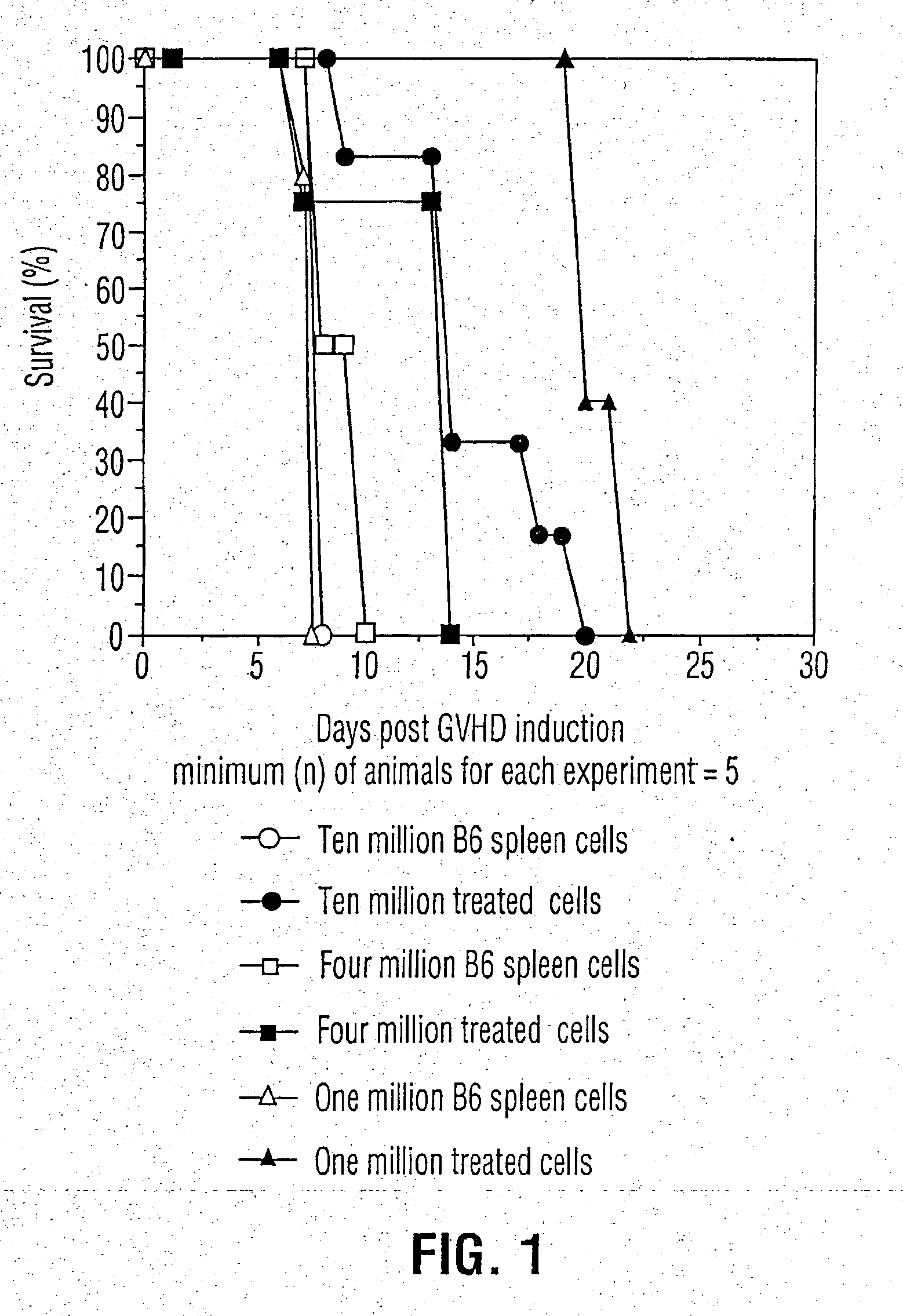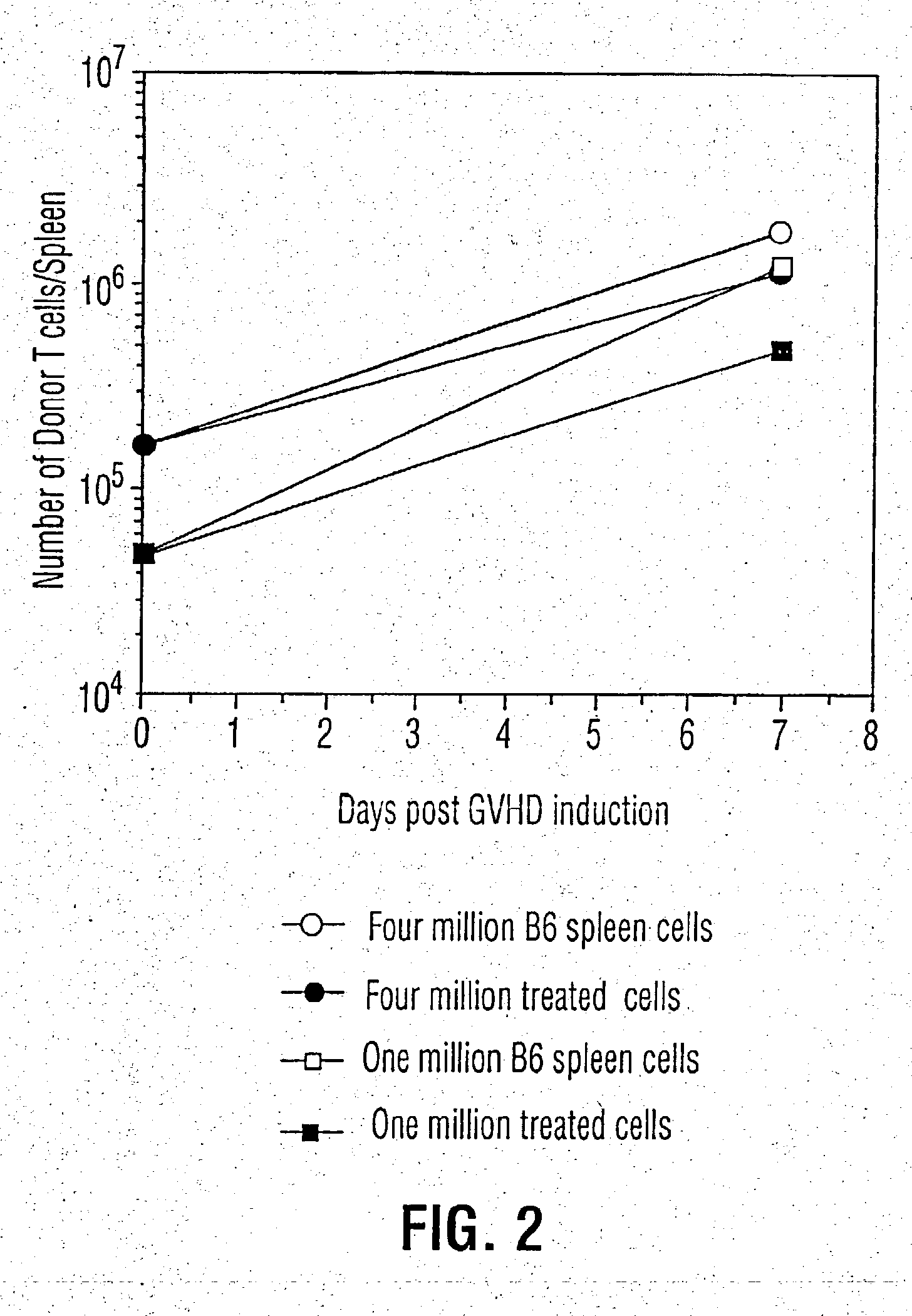Inhibition of graft versus host disease
a technology for preventing grafts and host diseases, applied in the field of graft versus host disease inhibition, can solve the problems of inconvenient and uncomfortable procedures for donors, excessive dosage, and long extraction procedures
- Summary
- Abstract
- Description
- Claims
- Application Information
AI Technical Summary
Benefits of technology
Problems solved by technology
Method used
Image
Examples
example 4
[0036] Human peripheral blood was collected from a consenting donor by venipuncture, and centrifuged to separate the white cell fraction (PBMCs) and the red cell fraction. The PBMCs were washed and re-suspended in autologous plasma, to a concentration of either 3.times.10.sup.8 per ml, 1.times.10.sup.8 or 5.times.10.sup.8 per ml, as shown in the following tables. To some suspensions, there was added 5%, based on the number of PBMCs, of red blood cells (RBCs). The suspensions were then subjected to oxidative stress, heat stress and UV radiation as described in Example 1 above, except for experimental control samples which received no such treatment. Accordingly, there were 4 different groups of samples, as follows:
[0037] Group I--3.times.10.sup.8 PBMCs+5% RBCs.
[0038] Group II--3.times.10.sup.8 PBMCs
[0039] Group III--1.times.10.sup.8 PBMCs+5% RBCs
[0040] Group IV--5.times.10.sup.8 PBMCs (control).
[0041] After subjection to the stressor as described, some of the samples were held in a r...
example 5-- clinical study
EXAMPLE 5--CLINICAL STUDY
[0049] To determine the safety, and to gain indications of the efficacy, of the process of the preferred embodiments of the invention, lymphocytes from 5-6 / 6 HLA identical donors are treated with oxidative stress and infused into patients diagnosed with acute myelogenous leukemia (AML) with primary non-responsive or relapsed and treatment resistant disease; chronic myelogenous leukemia (CML) in blast crisis refractory to conventional salvage regimens; acute lymphoblastic leukemia (ALL) with primary non-responsive or relapsed and treatment resistant disease; or relapsed, chemo-sensitive non-Hodgkin's lymphoma (NHL) not eligible for auto transplant. Patients have a related donor with a 5-6 / 6 HLA match, and give informed consent.
[0050] Bone marrow is collected from the donor under general anaesthesia; 800-1000 ML of marrow is aspirated from the posterior iliac crests and depleted of T cells by CD34.sup.+ stem cell selection. CD34 is 110 kD protein expressed on ...
PUM
| Property | Measurement | Unit |
|---|---|---|
| Fraction | aaaaa | aaaaa |
| Angle | aaaaa | aaaaa |
| Fraction | aaaaa | aaaaa |
Abstract
Description
Claims
Application Information
 Login to View More
Login to View More - R&D
- Intellectual Property
- Life Sciences
- Materials
- Tech Scout
- Unparalleled Data Quality
- Higher Quality Content
- 60% Fewer Hallucinations
Browse by: Latest US Patents, China's latest patents, Technical Efficacy Thesaurus, Application Domain, Technology Topic, Popular Technical Reports.
© 2025 PatSnap. All rights reserved.Legal|Privacy policy|Modern Slavery Act Transparency Statement|Sitemap|About US| Contact US: help@patsnap.com



